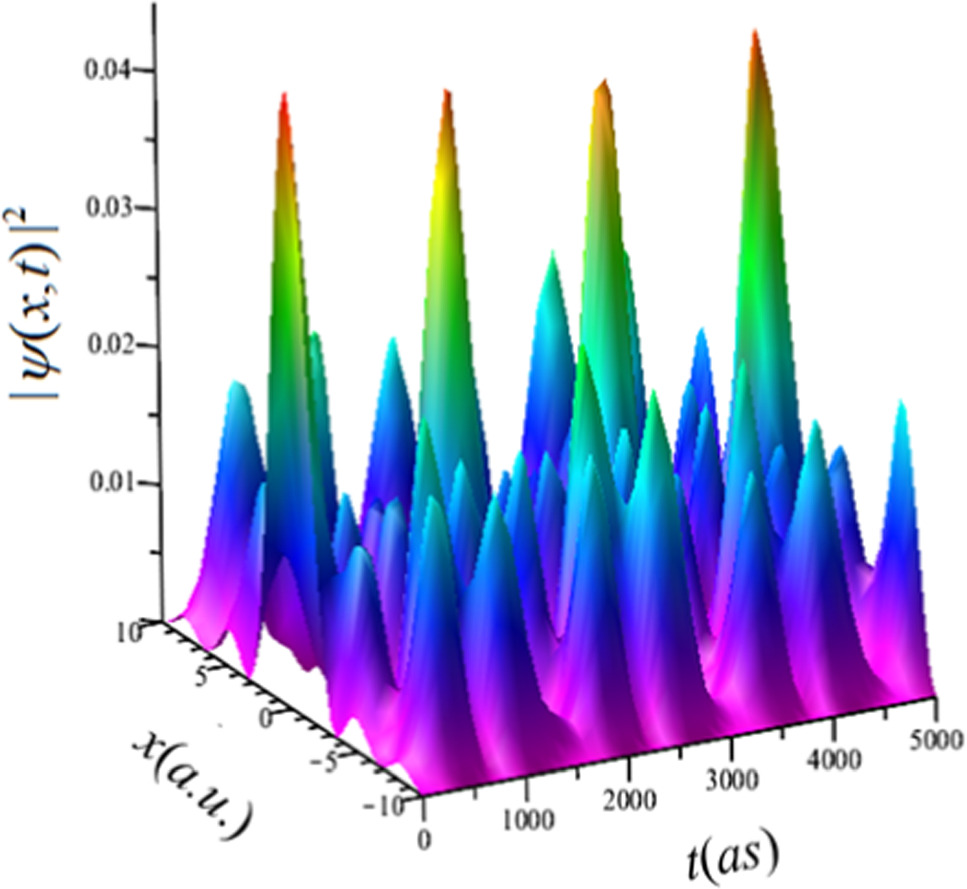https://doi.org/10.1140/epjd/s10053-024-00869-9
Regular Article - Nonlinear Dynamics
Time-dependent wave packet’s dynamics of a particle confined in the linear potential
1
School of Physics and Optoelectronic Engineering, Ludong University, 264025, Yantai, China
2
School of Sports, Ludong University, 264025, Yantai, China
Received:
3
March
2024
Accepted:
21
May
2024
Published online:
7
June
2024
This research investigates the time-dependent wave packet’s dynamics for a particle in a 1-D infinite deep quantum well disturbed by a linear potential. The interplay between quantum confinement and the linear potential significantly influences the wave packet’s dynamics of this system. Unlike the case of a particle in a 1-D quantum well, where the wave packet exhibits regular evolution and revival with an analytically determinable revival period, the introduction of the linear potential leads to discrete eigenenergy without an analytical expression, which makes accurate calculation of the revival period challenging. Results reveal that, for a given strength of the linear potential, regular evolution and revival of the wave packet occur only in a very small width of the quantum well; for larger widths of the quantum well, this behavior is lost. Additionally, for a given width of the quantum well, weak linear potential leads to regular periodic structures in the wave packet’s evolution, while stronger potential induces irregular oscillatory patterns. The revival period of this system can be evaluated through the autocorrelation function, which allows researchers to gain a deeper understanding of the dynamic behavior and periodic properties of wave packets. This study proposes a method to measure the revival period of a particle confined in the external potential, providing a pathway to a more precise understanding of intricate dynamics. Understanding these dynamics is crucial for applications in quantum computing, quantum confinement, and related technologies.
Copyright comment Springer Nature or its licensor (e.g. a society or other partner) holds exclusive rights to this article under a publishing agreement with the author(s) or other rightsholder(s); author self-archiving of the accepted manuscript version of this article is solely governed by the terms of such publishing agreement and applicable law.
© The Author(s), under exclusive licence to EDP Sciences, SIF and Springer-Verlag GmbH Germany, part of Springer Nature 2024. Springer Nature or its licensor (e.g. a society or other partner) holds exclusive rights to this article under a publishing agreement with the author(s) or other rightsholder(s); author self-archiving of the accepted manuscript version of this article is solely governed by the terms of such publishing agreement and applicable law.





